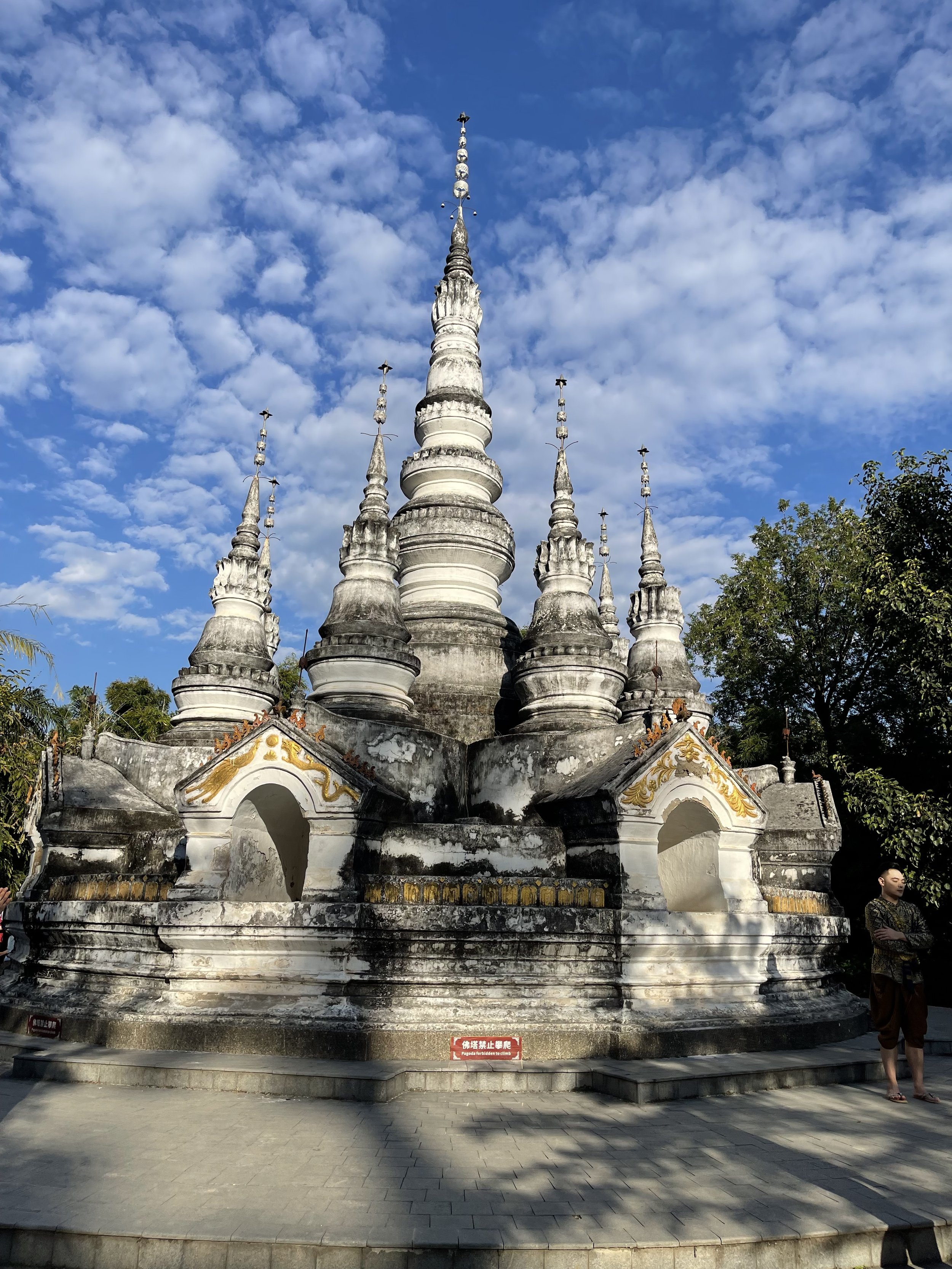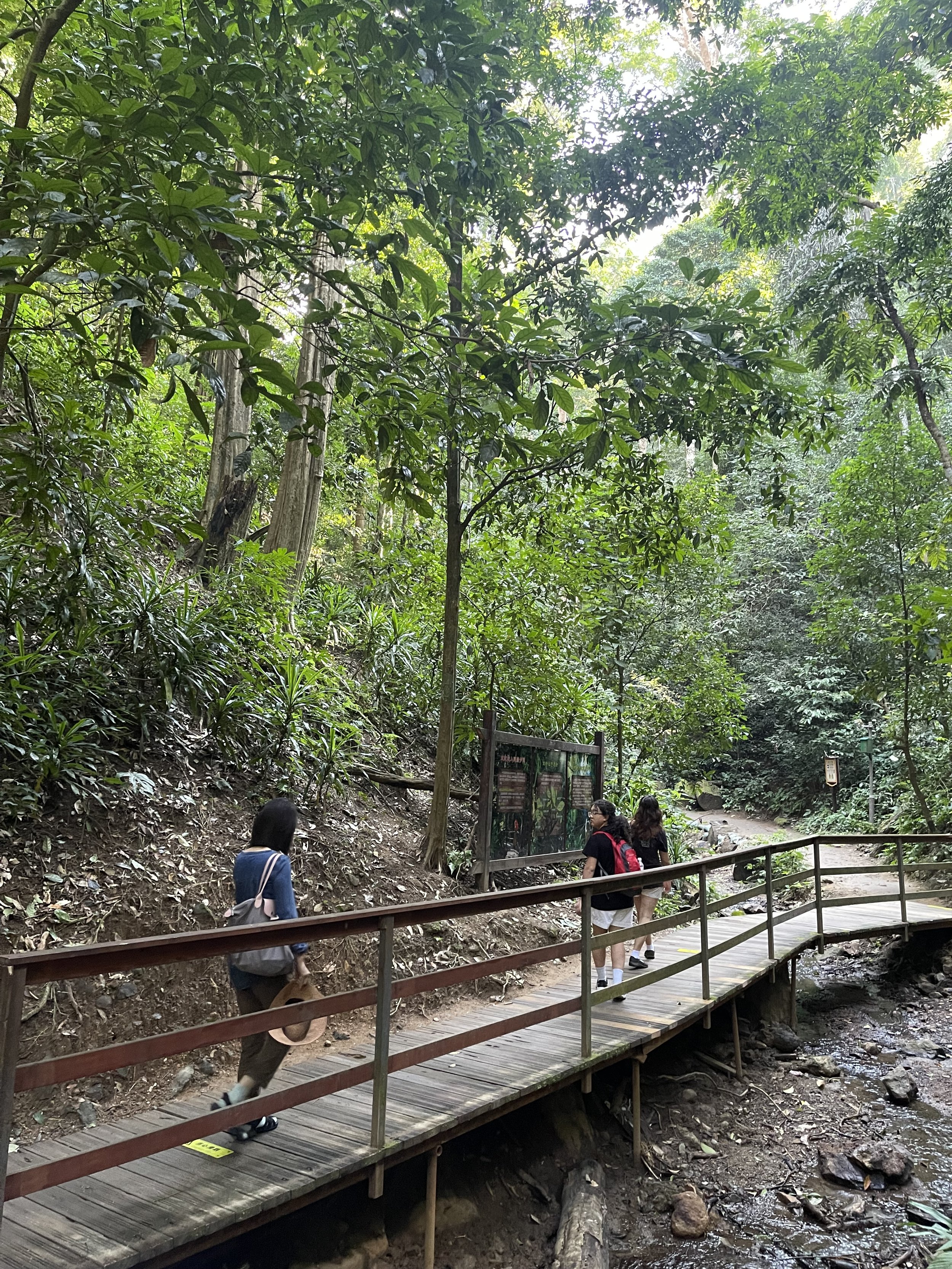It has become a custom of mine to look back on each year and write about the books I read over the year for pleasure and for personal enlightenment. As an academic, I do a lot of reading relating to my research projects and to the courses I teach, but I also try to keep up with other fields and subjects that I find interesting, which may or may not connect to my own research interests or teaching areas. I think it’s important for academics to read widely and well outside of their chosen disciplines, lest we become “mentats”—academics who only know a great deal about a very narrow area of the world. (Here I’m borrowing the category of human computer from one of my favorite sci-fi novels of all time, Frank Herbert’s Dune).
This past year, while continuing to recover from my close brush with death the previous year (I relate the story of my heart attack in a previous post), I chose many books dealing with the “big questions” of life, the universe, and everything (anybody familiar with Douglas Adams will get that reference). Why are we here on earth, where are we going, how will we know when we get there? That sort of thing. These are after all the questions that drove me to study Chinese and Japanese language and culture, to absorb the wisdom of the ages embodied in the great East Asian tradition. And they still drive me to this day.
While others prefer to be “buffeted by the episodic” (as one of my Dartmouth College history profs, Gere Daniell was fond of saying), I like to focus on the big and enduring questions that run like a thread though the history of humanity. Maybe that’s why I gravitate to big-picture people like Dante (whose wonderful documentary bio by Ric Burns I saw this past year) and Leonardo Da Vinci (ditto by brother Ken Burns which just came out last month), who asked big questions about life and death and everything in between.
But how do we approach these “big questions?” Through religion? Philosophy? Science and Nature? Music? Sci-Fi and Fantasy? Perhaps the best answer is “all of the above.” And while you might think my reading habits are a bit random, there is a method to my madness, as I will try to explain below.
Anyhow, I digress a bit. (Drumroll please) Here’s my list of faves from the past year’s reading.
Sci Fi and Fantasy
Lately, I’ve been indulging quite often in sci-fi and fantasy literature. Perhaps the desire to escape into another universe is just too strong to resist. Maybe my recent encounter with my own mortality has influenced this choice as well. Since I’ve proven my steadfast loyalty to George R. R. Martin and his Song of Ice and Fireseries or Game of Thrones—see last year’s reading post--it was time to try out Fire & Blood, the epic and massive prequel to the series, which inspired the HBO show House of the Dragon. I enjoyed both Seasons 1 and 2 of this show, which takes a sort of Shakespearean approach to the medieval dragon-invested fantasy world of Martin and his favorite family, the Targaryens (not to be confused with the Kardashians, nor with the Roys of HBO’s Succession fame, though there are intriguing parallels). I wasn’t sure how this long and detailed back-story of the world of Ice and Fire would compare with the action-packed swashbuckling stories of the Ice and Fire series. Yet once I started the book, I found it hard to put down, and I swept through the saga as if it were another volume of Ice and Fire. Despite the detailed and voluminous nature of the book, it still reads like a gripping work of fiction, and you find yourself following all the threads, all the kings and queens and princes and princesses and all their various friends and foes as they parade their way through the book. If only real history writing could be as interesting (a subject I will return to below). I’ve said it before, and I’m sure I’m not the first one to note that George R. R. Martin is the Stephen King of fantasy fiction—once you start reading, you just can’t put his books down (or perhaps you should never pick them up in the first place, but that’s another subject). All I can say is that for lovers of the Martin fantasy world, this book is a must read.
Last year, as I wrote in my previous post at the end of 2023, I decided to tackle the Isaac Asimov Foundation series, which I read in conjunction with watching the show along with my daughter (the show was interesting but was a great departure from the books). It was such a great revelation to read this series and find out how the master architect of space-faring sci fi paved the way for generations of visions about humanity’s quest for the stars. This year I picked up two Asimov novels, Caves of Steel and The Gods Themselves. Caves of Steel is a classic sci fi detective novel about a human detective, Elijah Baley, who is unwillingly partnered with a humanoid robot named R. Daneel Olivaw, to solve a crime. It’s a brilliant story that evokes a future world as powerfully as its successor Philip K. Dick and the novel Do Androids Dream of Electric Sheep that became the inspiration for the film Blade Runner, though Asimov’s world is funnier and not as dark as Dick’s portrayal of a world featuring replicants. The Gods Themselves is about a parallel universe, and a near-future world where humanity has learned to suck energy from that universe, only to learn that doing so may bring down both universes. It’s so far out there in terms of the thinking that it is literally mind-blowing, and the highlight is the second section which narrates the parallel universe and the heroic and bizarre creatures that inhabit it. I simply stand in awe of Asimov’s ability to conjure up worlds on scientific premises. Nobody can touch him. If Martin is the King of fantasy, Asimov is the Tolkien of sci-fi.
While I read some of Asimov’s books in my youth, Stanislaw Lem was my favorite sci-fi author in high school, and I think I read everything he wrote that had been translated into English language. Imagine my surprise and delight when at the beginning of this year I discovered a book of recently translated fiction by Lem, called The Truth and Other Stories. The short stories in the book represent the “scatterings from his workshop” as a fellow sci-fi author puts it, and they presage his brilliant novels and works of creative “non-fiction”. The sad and gripping story of a robot created just for the pleasure of being hunted down and destroyed by humans is alone worth the cost of the book. Like so much of his literature, this story delves deeply into the question of being, and whether sentient beings created by humans just for sport have souls and think as deeply as we do—a burning question for our current age of Generative AI. I only wish Lem had lived long enough to experience a chat with ChatGPT.
Having rekindled my love for this Polish sci-fi author, I tackled his most famous novel, Solaris, which I hadn’t read since college. This is a story about a spacefaring age when we have discovered an ocean planet with fascinating properties that suggest that the entire planet possesses some sort of intelligence. This sci-fi story then blends with a kind of horror story in which the human occupants of the station set up on its surface to investigate the planet are haunted by people from their past. Among the best features of this novel are the descriptions of the bizarre structures that emanate from the planet. The book gets you thinking about the nature of intelligence and our capacity as humans to identify alien forms of intelligence that are beyond our imagination. And then there is the probing of the human psyche by the planet itself. No wonder it was made into two films.
Since I live in China, I am not unaware of the great contributions that Chinese sci-fi authors have recently made to the genre. While I have yet to tackle the Three Body Problem (maybe that will be a project for this coming year), this past year I read another Chinese sci-fi story by Hao Jingfang called Vagabonds. I picked up the novel out of pure curiosity at the Foreign Language Bookstore in Shanghai, and it had been sitting on my shelf for a while, when I decided it was time to try it out. To be honest, it took me some time and a lot of patience and perseverance to really get into the story. It’s a slow burner all right, which spends a lot of time world-building before getting into the action. But for those with the patience to get through the first 200 pages, the book offers plenty of rewards as the story picks up in the middle and end. There are many things I like about this novel. First, the main protagonist is a young woman, who judging from her name is ethnically Chinese, though Chinese nationality does not seem to play any direct or obvious role in the story. Instead, the bifurcation is between Martians (humans living on Mars) and Earthers (folks living on Earth). Growing up in a city composed of glass tubes, under very different gravity conditions, the Martians have evolved a very different culture, ethos, and way of life to the Earthers. The main conflict of the story is between the Earthers and the Martians, who seem to have a far more socialist and collectivist mindset than the enterprising Earthers. Their inventions and discoveries get integrated into their system of life, rather than into a profit-oriented corporate economy. I think what the author does best is to describe this alternative world in great and fascinating detail, including how people dance, dine, socialize with and entertain each other. There is a lot of discussion about clothing and the technology that goes into fashion, which you won’t get in Lem or Asimov, that’s for sure. In other words, the author provides a more feminine, nuanced, and one could even say Chinese perspective on world-building. For that reason alone, it’s worth reading. The story itself could be stronger, but there is enough interesting action and culmination of story strands towards the end to make it a satisfying read.
Speaking of Philip K. Dick, I picked up a hard copy of the Man In The High Castle at the Foreign Language Bookstore a few months ago, and found it a very interesting read. Some say it’s his best work. I can’t testify to that because I haven’t read all his other books, but I found a very engaging story with a lot of food for thought. The premise of the story is that the Axis Powers won World War II, and now (c. 1960s when the book was published) the USA is divided between the West Coast occupied by the Japanese and the East Coast occupied by Nazi Germany. A very interesting proposition indeed, and it gets us to think more about the countries in the post-war era that were divided and occupied by the US and Soviet Union, notably Korea, not to mention Berlin.
Music
As followers of my research projects and posts know, I am a huge advocate of popular music in all its various manifestations. As a practicing (if not professional) musician myself, I listen to a lot of music every day, and I’m constantly learning to play, sing, and perform new songs on guitar or piano. I even dabble in songwriting, though I don’t perform my own songs much (maybe that will change soon). Anyhow, I always enjoy reading books about musical styles, bands, and musicians I like to listen to, and last year was no exception. Nick Mason, Inside Out: A Personal History of Pink Floyd was one book I enjoyed reading. I’d always been curious about the Pink Floyd story—how the band formed, how they discovered or created their own musical style, how and why they split up (well, why Roger Waters split from the band) and this book offers an insider’s view by the band’s drummer, who tells the story with a mixture of humility and humor. Another book that I enjoyed greatly was Lori Majewski and Jonathan Bernstein, Mad World. This book offers interviews with members of some of the most memorable bands from the 1980s, bands that were labeled “new wave” or progressive for the time, mostly coming out of the UK scene. These were bands that I followed and loved in my teen years (I’m thinking of writing a memoir called My Teen Ears but that’s another story for another time). It’s a real revelation to find out how they look back on their own musical achievements and on this age of musical exploration, when synthesized music became integrated into the musical mainstream and drum tracks started to replace real drummers. Though often looked down upon by musical purists, this was a great age of musical innovation, and the book is a fantastic record of that era. I discovered this book last summer (thanks Kindle Unlimited!) in conjunction with attending the Totally Tubular Music Festival in Boston, where I saw some of my musical heroes from the 1980s including the band Modern English (I Melt With You!), Tom Bailey from the Thompson Twins and Thomas Dolby (I discuss his new novel below).
As for my more “classical” musical tastes, while I delved into some books on Bob Dylan last year, this year I chose to focus on Leonard Cohen and The Beatles (I may do a deeper exploration of Bob Dylan next year). One was Sylvie Simmons, I’m Your Man: The Life of Leonard Cohen which is probably the best book on Cohen’s life and certainly the best biography of him that I’ve read so far. Cohen had such a fascinating life as an artist, from his early days in Montreal to his seven-year stint on the Greek island of Hydra, not to mention his time mingling with other bohemian artists in 1960s New York City. Then there was his five-year retreat to a Zen Buddhist monastery outside of LA in his later years, and his triumphal return to the stage towards the end of his life, and all the while he was creating compelling, mysterious and beautiful songs. Speaking of which, Harry Freedman, Leonard Cohen: The Mysterial Roots of Genius does a great job of illuminating the various influences including Biblical stories that inspired his songwriting.
Keeping with the subject of great songwriters, last year I picked up Ray Connolly, Being John Lennon on the recommendation of my favorite Beatles podcaster, Robert Rodriguez, (Something About The Beatles) who has interviewed Connolly on several occasions. Since I have already posted a lengthy review of this biography, I will just say that this is essential reading for any deep fan of Lennon and The Beatles. Speaking of which, I also recommend The Beatles Complete Chord Songbook for any musician looking for a comprehensive guidebook to their music. If you are a guitar player and wish to expand your knowledge of Beatles tunes, this is the best book for your collection. I used it last fall to cover every Beatles tune written and posted my covers on Youtube. I know that sounds nuts, but again, there’s a method to my madness and doing such things helps me improve my own musical skills and deepen my knowledge of music, as I relate in a previous post.
Another music history book I enjoyed last year around the time of Mozart’s birthday in January was Paul Johnson’s brief and cogent biography and analysis of the works of Mozart: A Life. Johnson is a wonderful guide and curator of the Mozart Museum, providing insights to many of his greatest works while placing them in historic context of his life, family, career, and environment, and all in a slim and easy to digest package. This book is worth another read for sure.
Academics
As I wrote earlier, this post is about my non-academic reading habits, not my academic ones, but I thought I’d include a few books here that have been helpful to me as an academic. One is Bryan Penprase and Noah Pickus, The New Global Universities. This book, co-written by a colleague of mine at Duke University, tells the stories of several global ventures in university-building in recent times. The only disappointment, though totally understandable, is that it doesn’t cover universities in China including our own Duke Kunshan University. If you want to get a deeper understanding of how universities have gone global in recent decades, this is the book to read.
Another book that I found quite useful for my own academic work is Mario Luis Small and Jessica McCory Calarco, Qualitative Literacy. This book offers many fine examples of how to do more nuanced and rich qualitative research and is a great boon to anthropologists, sociologists and ethnographers who conduct qualitative research and writing projects. Meanwhile, Tilar J. Mazzeo, How to Write a Bestseller gives excellent advice to academics about how to write for a broader audience than your colleagues in the field. If you want to write a history book that will read more like a George R. R. Martin novel than a yawny monograph, you should read this book. One good piece of advice: take yourself out of the story. No matter what your experience is as a researcher or writer, Howard S. Becker, Tricks of the Trade: How to Think About Your Research can help you think more deeply about your research projects. If you’re just starting out as a researcher, my dear colleagues Thomas Mullaney and Christopher Rea’s recent book Where Research Begins is a great way to think about how and where to begin.
If you’re a seasoned researcher and writer like myself but still find it hard to schedule your writing and integrate it into your busy life of teaching, advising, admin work, family life, and personal enjoyments, Joli Jensen, Write No Matter What: Advice for Academics provides you with a no-nonsense perspective, starting with the elimination of the false notion that as an academic you will have big chunks of time to write. Then the book offers much more practical advice on how to chip away at projects regardless of your limitations of time. One good piece of advice is to always keep one project on the “front burner” while others are simmering on the “back burner.” This is advice that I really take to heart, since I’m always pursuing multiple research, writing, and film projects while serving as a professor in a highly demanding academic institution.
Science and Nature
As readers of my blogsite know by now, I love trees. I also love birds. David George Haskell, The Songs of Trees brings these two loves together. It’s a poetic book about a deeply scientific subject, exploring how the world weaves together the various strands of biology into a great symphony of being. The complex and intricate relationships between flora and fauna in various parts of the world are lovingly described and analyzed by the author, who also inserts himself into the story as the observer, not afraid to get bitten, stung, entangled, or even poisoned by the environment he embeds himself into while learning firsthand about how nature really works.
On another note, Lyanda Lynn Haupt, Mozart’s Starling tells the story of the world’s most famous composer and his pet starling, and speculates how his singing bird may have inspired and influenced his compositions. She does this while also giving the reader plenty of vignettes of life with her own pet starling, a much maligned and misunderstood species of birds. It’s a wonderful story about the relationship between humans and our avian friends. And for Mozart lovers, the book provides many fine insights into his personal life and his career as a composer.
I also love stars, and reading Roger Penrose, Cycles of Time gives one a finer appreciation of them as one gazes out into the infinity of the cosmos beyond our tiny planet earth. How did the universe first arise? What was “there” before “there” was “there”? These are the great conundrums that humans have been pondering for millennia, and Penrose comes as close as any human can to providing some fascinating scientific explanations for the how and the why. I find this work mind-boggling in a good sense. Even though much of the science and the math in this book goes beyond the meager abilities and limitations of my own feeble human brain, I find it a great exercise to read such a book and try to understand some of the basic concepts.
Jim Goodman, Xishuangbanna: The Tropics of Yunnan was another book I enjoyed reading. I’m placing this book in the science and nature category even though it’s focused more on the human aspect of this part of the world. I found this to be a great read as we explored the area known as Xishuangbanna is the southwesternmost part of China last week (see my previous post). It’s a fine effort to integrate the natural and human world in a bid to understand what makes this part of China so complex and interesting, with so many distinct ethnicities and cultures that complement the astounding variety flora and fauna that occupy this tropical corner of the world.
Fiction and Poetry
I tend to read more non-fiction than fiction books, but here are some of my favorites from the past year outside of the sci-fi fantasy category that I explored above. One of my finer fiction reads was by the unlikely author Thomas Dolby, whom I’ve loved as a songwriter and musician since the early 1980s. His first novel Prevailing Wind which came out last summer is a stunning debut. Like his songs, which capture poetic vignettes of life, he demonstrates a remarkable ability to capture a lost world of boating and sailing and to tell the intriguing story of the confluence of wealth and poverty in the yacht clubs of early 20th century New England. If you are drawn to the lost arts of yachting and sailing, this is a great read. Dolby obviously did his homework, and his grasp of nautical terminology alone makes the book worthwhile, but I have to say I was pleasantly surprised by the other aspects of the book as well, including the character development, the dialogue, and the thick descriptions of life in a small Maine coastal town and in turn-of-century New York City. This is a wonderful work of historical fiction--one of my favorite genres--by one of my favorite “new wave” songwriters from the 1980s.
This past year I spent a lot of time reading poetry and expanding my own collection of books of poetry. One of the great revelations for me was reading Lord Byron’s book Don Juan. The book is divided into sixteen “cantos” composed of one hundred or more verses each in identical form of iambic pentameter with a particular rhyme scheme, A B A B A B C C. While the story follows the life of the famous fictional character Don Juan and his many amorous adventures across the European landscape, the author indulges in many long digressions and disquisitions, all the while keeping up his trenchant sense of humor while subtly or not-so-subtly critiquing the society of which he was a staunch member, along with occasional bold attacks against his fellow poets Wordsworth and Southey (not even Keats emerges unscathed). The poetry alone is a work of great genius, and the book must be read along with annotations that illuminate all the various historical and cultural references he drops into each stanza. Admittedly it takes some time and a great deal of patience and persistence to get through each of the sixteen cantos, and one can easily lose the thread of his story and ideas (which he often admits and feels guilty about, though he never stops digressing). This book reminds me of Thomas Pynchon’s Gravity’s Rainbow. If Pynchon wrote poetry rather than prose, he would probably be very close to Byron in style.
Other than Pynchon, whose entire oeuvre I’ve read, some books more than once, one author I’ve kept up with consistently over the years is T. C. Boyle. I’ve always enjoyed his dark sense of humor and his ability to write from the perspectives of so many different characters. This year I found his book of short stories I Walk Between the Raindrops to be a very enjoyable reading experience, and very timely—there is even a story about a man caught on a cruise liner during the early stages of the global pandemic known as COVID-19. One of my favorites in this set is about a man who makes a deal with a woman to take her apartment after she passes, but she ends up outliving him (sorry to give it away, but you’ll still enjoy the story nonetheless).
There are a few works that I reread along with some that were new to me. I’ve been a fan of Jorge Luis Borges since college, and rereading Ficciones, his iconic collection of short stories and fictional non-fiction essays, was great fun. Talk about mind-blowing, each story twists your brain into a pretzel in different ways. Another book I picked up and ended up enjoying (though it’s a dark story indeed) was Disgrace. This book by the well-known South African author J. M. Coetzee focuses on the story of a 50-something academic who indulges in a casual affair with a student, doesn’t undergo the appropriate repudiations of his careless act, and ends up leaving academic life to join his daughter on her farm in the countryside. Her own encounter with sexual violence is a poignant counterpoint to his affair. It’s an unforgettable story about race relations, generational conflict, and family relations that goes beyond the time and the place.
Speaking of which, Herman Hesse, Siddhartha, is another classic that I read in college and revisited last year that explores life, sex, family, generation gaps, and the inner life. I’ve been a fan of Hesse’s work since college and have read most of his oeuvre over time, including several readings of his most famous novel The Glass Bead Game (I’m due for another reading soon), but I hadn’t revisited Siddhartha since I first read it as a college student, and since I’ve spent at least some of my career teaching and learning about the history of Buddhism, I thought it would be nice to return to this classic work. It was certainly worth a re-read, and for those who haven’t read it yet, I highly recommend it. What’s interesting is how the book is a reflection of the story of the original Buddha and his enlightenment in ancient India, and yet it is not about him, but about a contemporary of his who goes through his own individual journey towards enlightenment.
Another book I decided to reread after many years was Zen and the Art of Motorcycle Maintenance, by Robert Pirsig. I first read this book in college and read it again around 15 years ago while on a big road trip with my then six-year old daughter. This was my third read. I like the combination of the “on the road” story of the father and son, and the mental journey into his inner psyche in the form of a mysterious character named Phaedrus. Plenty of food for thought as he dissects western civilization and philosophy and compares the great thinkers of the West (including Aristotle) to the eastern traditions of Daoism and (not as much as the title suggests) Buddhism, as he searches for the nature of quality and how to recognize it. It’s a question that jibes with me in the realm of academic life, where everything is increasingly corporatized and quantified.
Rounding out the fiction section of this long annual book review is Seicho Matsumoto, Tokyo Express. Again, this was a book I picked up by chance at the Foreign Language Bookstore in Shanghai, the best English-language book shop in China. It’s a relatively short novel that takes place in Japan during the late 1940s and starts out with a suspicious “lover’s suicide” on a beach that is eventually investigated by local police and by Tokyo police as a possible murder case. The way the detectives eventually discover the truth is simply ingenious, having to do with train schedules, and I won’t say anymore except that this book is a must-read for any lover of mystery and detective novels, and of Japanese fiction.
Well, that pretty much sums up some of the best of my pleasure reading for the year. Hope to see you again this time next year for a roundup of 2025!












